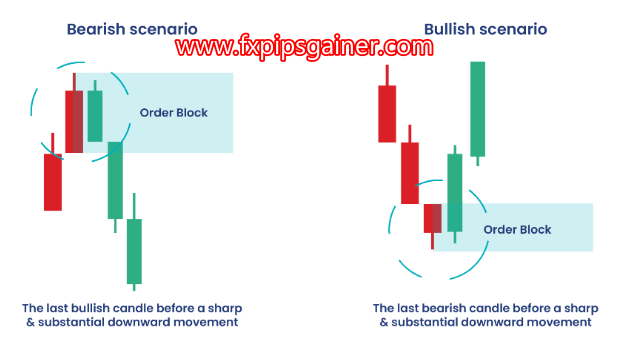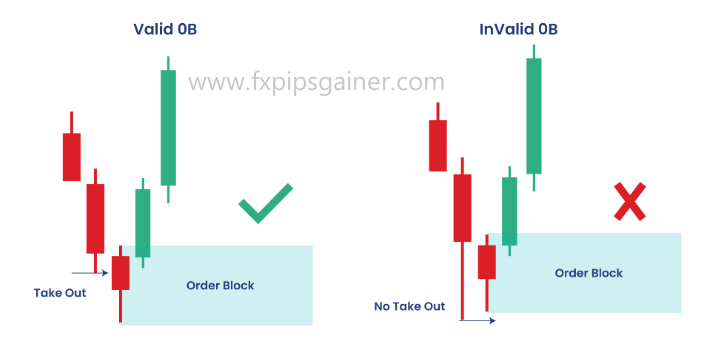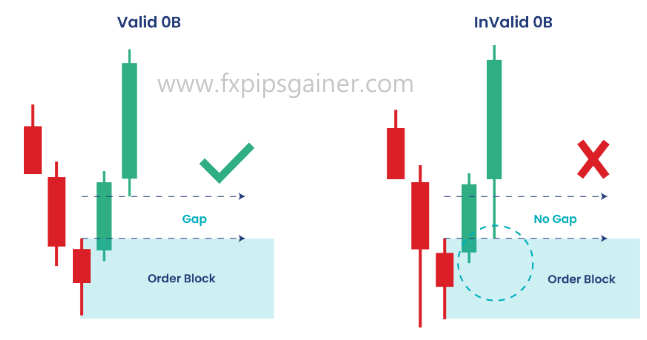Maximize your profit by copy our Trade
Understanding Order Blocks
An order block is a significant price level at which large institutional traders, such as banks and hedge funds, place orders. These blocks are crucial for understanding market dynamics and can provide valuable insights into potential price movements.
What is an Order Block?
In the world of trading, order blocks are clusters of buy or sell orders that are strategically placed at specific price levels. These orders are not random; institutions position them to execute large trades without causing drastic price changes. This is similar to how a chess player carefully plans each move to gain an advantage.
Characteristics of Order Blocks
To effectively identify order blocks, traders should look for several key characteristics:
- Takeouts and Liquidity Sweeps: Order blocks often coincide with areas where price has previously taken out stops or swept liquidity. This activity indicates significant buying or selling pressure.
- Inefficiencies and Imbalances: Look for price levels where there has been a rapid move away, creating an imbalance in supply and demand.
- Unmitigated Conditions: Valid order blocks are often not revisited after they have been formed, indicating strong conviction from institutional traders.
Trade Now
The Role of Order Blocks in Trading
Order blocks play a crucial role in trading as they serve as significant levels of support and resistance formed by large institutional traders, such as banks and hedge funds. These blocks indicate areas where substantial buying or selling activity has occurred, influencing future market movements.
Why are Order Blocks in Forex Important?
The importance of order blocks in Forex trading is akin to understanding the currents beneath the waves in the ocean. They are the invisible forces that can propel you forward or pull you under. Here are several reasons why they are crucial:
- Blueprints of Market Intentions: Order blocks serve as blueprints revealing the intentions of the market’s most influential players. They indicate where significant funds have been placed, providing clues to future market movements.
- Price Movement Catalysts: Order blocks often act as catalysts for significant price movements. Identifying an order block can alert traders to potential surges or drops in price, allowing them to position themselves advantageously.
- Risk Management Tools: By understanding the location of order blocks, traders can set more informed stop-loss orders and take-profit points, enhancing their overall risk management strategies.
- Market Structure Markers: Order blocks help define market structure, indicating key support and resistance levels that are essential for technical analysis and making educated trading decisions.
- Psychological Indicators: They serve as psychological indicators. Knowledge that an order block represents a concentration of trades by large institutions can influence trader sentiment and, consequently, the market’s direction.
- Liquidity Pools: Order blocks often represent liquidity pools. For traders looking to execute large orders, these blocks can provide the necessary liquidity to enter or exit positions without causing slippage.
Identifying Order Blocks
Key Characteristics of Order Blocks
To effectively use order blocks in your trading strategy, it’s essential to recognize their key characteristics:
- Size and Volume: Order blocks are typically associated with high volume and large trades. A significant amount of buying or selling in a specific price range indicates the presence of an order block.
- Price Patterns: Look for consolidation or accumulation phases where the price stays within a narrow range before a breakout. This tight trading range often precedes a significant price movement.
- Timeframes: Order blocks can appear in various timeframes, but they are most impactful in higher timeframes like daily or weekly charts. Higher timeframes tend to provide stronger signals due to the accumulation of larger trades.
How to Identify Order Blocks
Identifying order blocks is like uncovering hidden gems in the vast landscape of the Forex market. It’s a skill that can significantly enhance your trading strategy. Here’s a step-by-step guide to help you spot these pivotal areas:
- Study Historical Price Charts: Begin by examining historical price charts. Look for areas where the price has made a strong move away from a certain level. These are potential order block zones.
- Observe Consolidation Phases: Pay attention to consolidation phases before a significant price movement. The consolidation phase often precedes the formation of an order block.
- Identify Institutional Footprints: Large institutions leave footprints in the form of price levels where substantial volumes have been traded. Use volume indicators or price level tools to identify these key levels.
- Look for Rejection Wicks: Candlestick charts can reveal order blocks through rejection wicks. These are the tails or shadows of candlesticks where price has tested a level and then sharply reversed.
- Use Technical Indicators: Incorporate technical indicators such as Fibonacci retracement levels, pivot points, and moving averages to pinpoint potential order block areas.
- Check Timeframes: Analyze multiple timeframes. Order blocks may be more evident on higher timeframes such as the 4-hour or daily charts.
- Confirm with Price Action: Once you’ve identified a potential order block, watch for price action to confirm it. If the price respects the level by bouncing off or breaking through with significant volume, it’s likely an active order block.
- Refine with Support and Resistance: Refine your identification by correlating order blocks with known support and resistance levels. They often align, reinforcing the significance of the block.
Tools and Indicators for Identifying Order Blocks
Essential Tools for Identifying Order Blocks
Several tools and indicators can help you identify order blocks effectively:
- Order Block Indicator: These are specialized indicators designed to highlight order blocks on your chart. They can automatically detect and mark potential order block zones, making it easier to spot them at a glance.
- Volume Indicators: High trading volume often accompanies order blocks. Volume indicators, such as On-Balance Volume (OBV) or Volume Profile, can help confirm the presence of an order block by showing unusual spikes in volume at specific price levels.
- Price Action Analysis: Observing how price behaves around certain levels is crucial. Look for patterns such as rejection wicks, consolidation phases, or sudden price movements that suggest the presence of an order block.
Identifying Valid Order Blocks
To deepen your understanding, it’s essential to explore how to identify a valid order block. Valid order blocks often feature specific characteristics that set them apart:
- Takeouts and Liquidity Sweeps: A valid order block often corresponds with price levels that have previously taken out stop-loss orders or swept liquidity. This indicates that significant buying or selling pressure has occurred.
- Inefficiencies and Imbalances: Look for areas where the price has rapidly moved away, creating an imbalance in supply and demand. These inefficiencies can signify the presence of an order block.
- Remaining Unmitigated: A valid order block is typically one that has not been revisited or mitigated. If the price has moved away and has not returned to that level, it reinforces the order block’s significance.
Valid vs. Invalid Order Blocks
Understanding Valid Order Blocks
Recognizing the difference between valid and invalid order blocks can significantly enhance your trading strategy. A valid order block generally exhibits several key characteristics:
- Liquidity Sweep: A valid order block typically shows signs of a liquidity sweep. This occurs when the price takes out stop-loss orders or sweeps liquidity at a specific level, indicating that large players have accumulated or distributed significant positions.
- Imbalance in Price: Look for an imbalance in price, which indicates that the market has moved away rapidly from a certain level, leaving an area of untraded prices. This suggests that significant buying or selling interest was present at that level.
- Unmitigated Condition: A valid order block remains unmitigated, meaning it hasn’t been retested or “filled” after its formation. If the price has not returned to that level, it reinforces the reliability of the order block for future trading decisions.
Identifying Invalid Order Blocks
In contrast, invalid order blocks often lack the key characteristics mentioned above. Here are some signs to look out for:
- Absence of Liquidity Sweeps: If there is no evidence of a liquidity sweep, the order block may not be significant. This means that large players have not shown interest in that price level.
- Neutral Price Action: If the price action around the order block is neutral or lacks momentum, it may indicate that the order block does not hold importance in the current market context.
- Retested Levels: If the price has revisited the level of the order block multiple times and has filled the area, it may indicate that the order block is no longer valid. This suggests that the interest at that level has diminished.
Take Out and Liquidity Sweep
Valid Order Blocks
A valid order block often features a takeout and liquidity sweep. This phenomenon occurs when the price moves beyond a previous high or low to capture liquidity, indicating strong institutional interest. Here’s how it works:
- Takeout: A takeout happens when the price breaches previous highs or lows, triggering stop-loss orders. This creates a surge in volume as liquidity is grabbed, showing that institutional traders are actively participating.
- Liquidity Sweep: Following a takeout, a liquidity sweep occurs, where the market moves through price levels with low trading activity. This reveals the accumulation or distribution of large positions by institutions.
- Example: If a bullish order block forms after the price dips below a previous low and then reverses, it indicates that significant buyers are stepping in. This behavior solidifies the order block’s reliability for future trades.
Invalid Order Blocks
In contrast, an invalid order block might form without any significant takeout or liquidity sweep. Here are the characteristics of such weak order blocks:
- Absence of Significant Movement: If the price does not move past key levels to capture liquidity, it indicates that there is no strong institutional interest at that level.
- Weak Reversal: A lack of a strong reversal following the formation of an order block suggests that there is insufficient buying or selling pressure to validate the block.
- Risks of Trading Weak Order Blocks: Trading based on such weak order blocks can be risky. The absence of institutional support makes these levels more susceptible to being broken, leading to potential losses.
Inefficiency and Imbalance
Valid Order Blocks
When spotting valid order blocks, it’s essential to look for inefficiencies and imbalances in the market. These phenomena usually occur during sudden, strong price movements that leave gaps or areas with little trading activity. Key points include:
- Inefficiencies: These are areas in the market where the price moves rapidly, leaving no time for traders to react or place orders. This often results in a gap on the price chart, indicating a significant shift in supply and demand.
- Imbalances: An imbalance occurs when aggressive buying or selling creates a situation where there are many orders on one side and few on the other. For example, if a large number of buy orders flood the market, it can lead to a rapid price increase, leaving behind areas of low trading volume.
- Price Gaps: In trading, these imbalances are often referred to as “price gaps.” They can serve as key indicators of where future order blocks might form, as they represent levels where traders previously lacked the opportunity to act.
Invalid Order Blocks
In contrast, an invalid order block is characterized by the absence of significant inefficiencies or imbalances. Here are the signs that indicate a weak order block:
- Smooth Price Action: If the price action around the order block is smooth and lacks gaps or rapid movements, it suggests that there wasn’t enough buying or selling pressure to create an imbalance. This indicates that the level may not hold much significance.
- Lack of Aggression: Without signs of aggressive buying or selling, the order block is less likely to influence future market behavior. Traders should be cautious when encountering such blocks.
- False Signals: Identifying these characteristics early on can help traders avoid false signals. Trading based on invalid order blocks can lead to losses, as they are less reliable for making informed decisions.
Unmitigated Order Blocks
Valid Order Blocks
A valid order block remains unmitigated, meaning the price hasn’t returned to retest or “fill” it since it formed. Key characteristics include:
- Strong Price Reaction: When the price revisits this unmitigated block, it often reacts strongly due to the remaining institutional orders. This reaction can manifest as a significant price bounce or reversal, indicating active buying or selling interest at that level.
- Unmet Demand or Supply: The unmitigated nature of the order block suggests that there is still unmet demand or supply at that level. This indicates that institutions have left orders unfilled, which can lead to future price movements when the market returns to that area.
- Predictive Tool: Understanding how to identify a valid order block often hinges on recognizing these unmitigated zones. Traders can use these areas to predict potential market reversals or continuations, thereby enhancing their trading strategies.
Invalid Order Blocks
In contrast, an invalid order block is one that has already been mitigated. Important points to note include:
- Retested Levels: An invalid order block occurs when the price has returned and traded through the block, filling the institutional orders that created it. This indicates that the previous interest at that level has been satisfied.
- Loss of Influence: Once an order block is mitigated, it loses its effectiveness. The buying or selling pressure that was once present has already been absorbed by the market, making the area less significant for future trades.
- Risk of False Signals: Trading based on mitigated order blocks can lead to false signals. Since the initial interest has been fulfilled, the likelihood of a strong price reaction at that level is diminished, increasing the risk for traders.
Types of Order Blocks
Understanding Order Blocks
Understanding the different types of order blocks is essential for traders looking to refine their strategies. Here are the main types:
Bullish Order Block
A bullish order block is characterized by significant buying activity, indicating strong interest from large institutional traders. Key points include: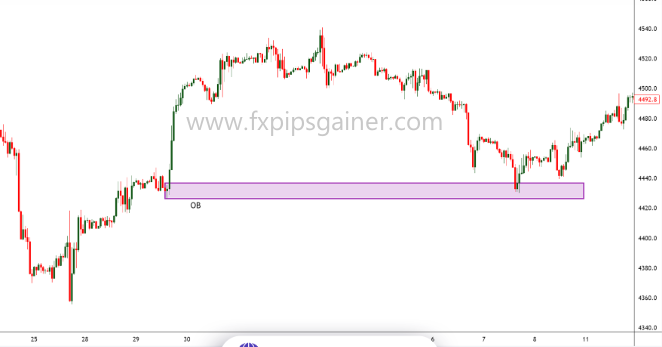
- Typically forms after a downtrend, where large buyers accumulate positions.
- Creates a zone of support, where the price is likely to find a floor and bounce back up.
- When the price revisits this area, increased buying pressure can lead to upward movement, providing an excellent entry point for long trades.
Bearish Order Block
Conversely, a bearish order block is marked by substantial selling activity from institutional traders. Important aspects include: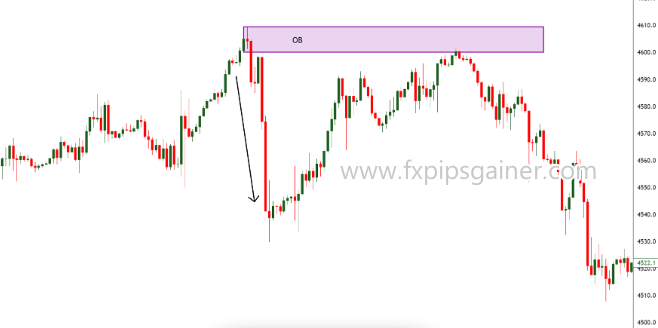
- Forms after an uptrend, where large sellers begin to offload their positions.
- Creates a zone of resistance, where selling pressure can cause the price to reverse and move downward upon approaching this area again.
Breaker Block
A breaker block occurs when the price breaks through a previous order block, signaling a strong continuation of the current trend. Features include: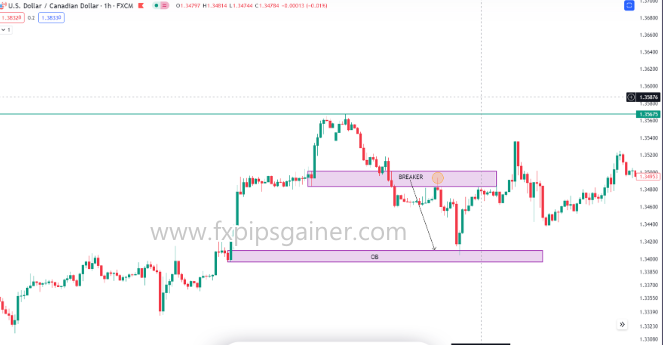
- If the price breaks above a bearish order block, the previously resistant area may become a support zone.
- This breakthrough indicates a significant shift in market sentiment and confirms the strength of the trend.
- Breaker blocks are often accompanied by high volume, further validating their reliability.
Rejection Block
A rejection block forms when the price attempts to break through an order block but fails, leading to a strong reversal. Key points include:
- Indicates areas where the market has rejected further price movement in a particular direction.
- For example, if the price tries to break above a bullish order block but gets pushed back, it signals strong selling pressure and potential downward movement.
- Valuable for identifying false breakouts and reversal points.
Vacuum Block
A vacuum block represents areas of low trading activity or liquidity. Important details include: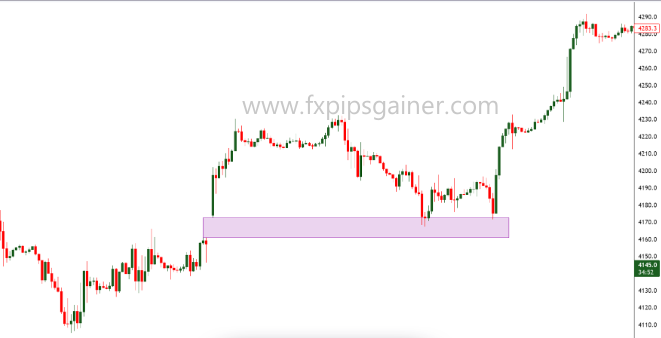
- Occurs when the market quickly moves through a price range with little to no resistance, leaving a gap in trading activity.
- When the price enters a vacuum block, it often does so rapidly, filling the gap quickly, thus creating trading opportunities.
- Recognizing vacuum blocks can help traders anticipate potential areas of price instability, crucial for managing risk.
Rejection Block vs. Order Block
When comparing a rejection block to an order block, it’s important to understand their differing roles:
- An order block is where institutional traders have placed large orders, leading to potential price reversals or continuations.
- A rejection block occurs when the price attempts to move through an order block but fails, indicating strong opposition and likely leading to a reversal.
Common Mistakes in Trading with Order Blocks
While trading with order blocks can be effective, several common mistakes can undermine success:
- Relying Solely on Order Blocks: Traders should combine order block analysis with other technical indicators, such as moving averages, RSI, or MACD, to enhance decision-making.
- Incorrectly Identifying Order Blocks: A lack of understanding or experience can lead to misidentification. Traders should take the time to study and practice recognizing order blocks correctly.
- Ignoring Market Context: Focusing on order blocks without considering the broader market context, including trends, news events, and economic data, can lead to poor trading decisions.
Maximize your Profit by copy our Trade
How to Trade with Order Blocks
Understanding the Power of Order Blocks
Trading with order blocks is akin to harnessing the gravitational pull of the market’s most significant players—institutional traders. To effectively trade with these blocks, one must understand their influence on price action and make strategic decisions based on their presence. Here’s a comprehensive guide to trading with order blocks:
1. Identify Potential Order Blocks
Begin by using the methods discussed earlier to locate potential order blocks on your charts. These areas are typically where significant market moves have originated. Look for: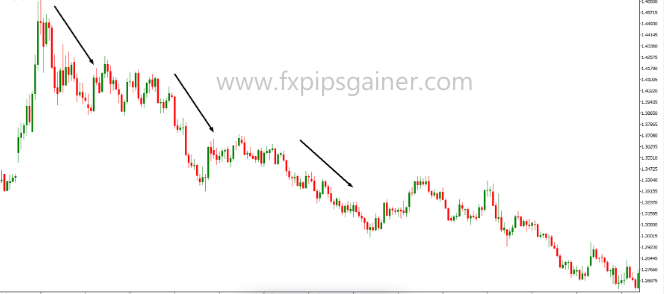
- Strong price movements that indicate buying or selling pressure.
- Consolidation zones preceding major price shifts.
- Price gaps or areas of low trading activity.
2. Wait for Price Action Confirmation
Once you’ve identified an order block, wait for price action to confirm its influence. Look for signs such as: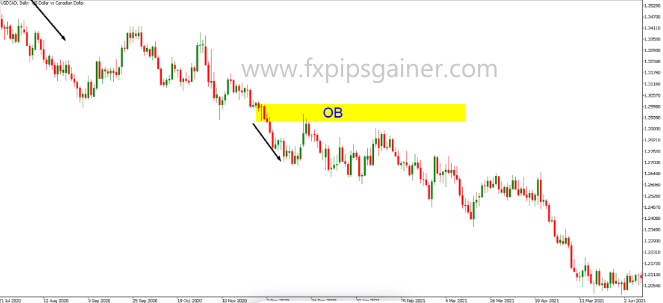
- A bounce off the order block, indicating buyer or seller interest.
- A breakthrough with increased volume, suggesting strong institutional activity.
3. Set Entry Points
If the price action confirms the order block’s significance, set your entry point near the block:
- For bullish blocks, consider buying when the price approaches the block from above.
- For bearish blocks, consider selling when the price approaches from below.
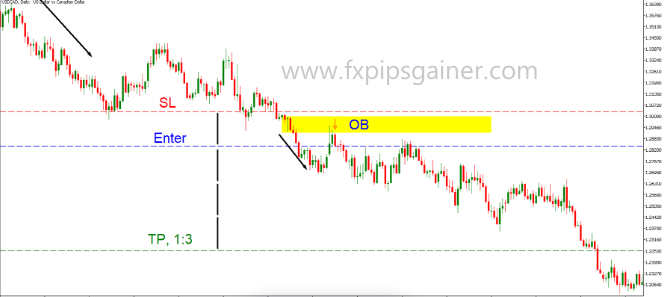
4. Determine Stop-Loss Levels
It’s crucial to manage your risk effectively. Place your stop-loss just outside the order block to minimize potential losses if the market does not react as expected. This strategy helps protect your capital in case of false breakouts.
5. Plan Your Exit Strategy
Set take-profit levels at the next significant order block in the direction of your trade. Consider the following:
- A previous high or low that could act as a target.
- Another identified order block that may serve as resistance or support.
6. Monitor Market Context
Always consider the broader market context when trading with order blocks. Factors to consider include:
- News events that may impact market sentiment.
- Economic data releases that could influence price movements.
- Overall market trends that might affect the reliability of the order block.
7. Manage Risk
Never risk more than a small percentage of your trading capital on any single trade. Even well-identified order blocks can fail to influence the market as expected. A good rule of thumb is to risk no more than 1-2% of your capital on a single trade.
8. Refine with Experience
As you gain experience, continually refine your ability to identify order blocks and adjust your trading strategy around them. Learn from both successful and unsuccessful trades to improve your approach and decision-making process.
Recent Posts
- What is a Cent Account?
- Smart Money Concepts: Mastering Mitigation Blocks, Breaker Blocks & QML
- Understanding ICT Reclaimed Order Blocks: How Institutions Control Market Moves
- How to Trade Consolidations in Forex and Other Markets
- How to Identify Real Forex Traders vs Fake Screenshot Gurus
- The Gold Accumulation System – A Safe Buy-Only Strategy for Cent Accounts
- The Dark Side of Forex: How Screenshot Scammers Trap New Traders
- CHOCH vs MSS: The Exact Difference Every Smart Money Trader Must Know
- Gold Buy-and-Hold Strategy Using Cent Account and Compounding Lot Size (No SL Trading Model)
- How to Trade Order Flow Imbalances: Simple Rules for Spotting Buy & Sell Order Blocks
- Copy Our Long-Term Gold Trading Strategy
- Execution Mode vs Outcome Mode — The Professional Approach to Managing Trades
- How I Achieved 80.95% Profit in One Year on HFM Copy Trading
- Why It Took Me 15 Years to Become a Profitable Trader
- How to Read and Interpret Profit Factor in Forex Backtesting
- Understanding the Institutional Accumulation Channel
- Understanding No-Deposit Bonuses in Forex: What You Need to Know
- XAUUSD Analysis Summary
- Gold Price Surge Summary
- XAU/USD(GOLD) Analysis 07/10/2025
- Gold Market Update 07/10/2025
- Gold(XAUUSD) Market analysis 07/10/2025
- Start your journey to Forex success
- আপনার ফরেক্স সফলতার যাত্রা শুরু করুন
- 7 Money Rules for Financial Awareness and Peace of Mind
- Gold Recovers Ahead of Nonfarm Payrolls: Key Insights
- Weekly Market Wrap: Gold Pulls Back Amid Dollar and Bond Rotation
- Copy Our Trade with OneRoyal
- Finding Your Path: How to Choose the Perfect Forex Mentor for Success
- Experience the Stability of a 100% Secure Trading Account!
- The 100% Profitable Trading Approach: Maximize Gains with Minimal Risk
- The Head and Shoulders Chart Pattern
- Bullish and Bearish Rejection Blocks: Identifying Key Trading Opportunities
- Just Market: Is It Worth Your Time and Money?
- Why LiteFinance Stands Out: A Comprehensive Review
- Understanding XAUUSD: Gold Strategy and Central Bank Reserve Management
- Hotforex Copy Trading Service
- Understanding Profit Factor: A Key Metric for Trading Success
- Supply and Demand Dynamics: How Gold Production Affects XAUUSD
- The Safe Haven: Gold as a Strategic Investment During Economic Downturns
- Mastering Deception: How to Scam as a Forex Signal Provider
- The Impact of Rising Bond Yields on Gold (XAUUSD)
- Understanding the Correlation Between Oil Prices and Gold (XAUUSD)
- The Impact of Geopolitical Events on Gold Demand (XAUUSD)
- Fundamental Strategy Overview: XAUUSD (Gold)
- Understanding the Role of Gold (XAUUSD) as an Inflation Hedge
- How Central Bank Interest Rates Influence Gold Demand
- Gold Holding Trading System
- From Novice to Pro: Navigating the ICT Propulsion Block in Trading
- Single Candle Order Block

